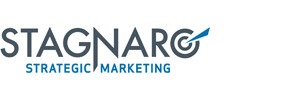“How are we doing” or “How is campaign X performing?” It’s these simple questions that can strike fear in the heart of any marketing executive. Although this seems a relatively easy question to answer, it’s actually got quite complicated. As marketing becomes more automated and powered by great new marketing applications — most living in the cloud — it also becomes more siloed from a data perspective, making it more and more difficult to answer this simple question.
To get the holistic answer to the “how are we doing?” question, most organizations are manually producing a monthly presentation, usually put together by marketing operations or an analyst through a process that involves many painful hours of reporting and then manually entering numbers into Excel.
Now imagine a world where you can have all of these metrics at your fingertips, in real time. This would allow you to make on the fly changes in order to better optimize your campaigns. Having a marketing dashboard can change a company’s culture from a monthly, rear-view mirror management to one of daily, or hourly, performance optimization. You’re on board right? Right?? Well now comes the hard part.
Not only do you have to decide which metrics you want access to, but you’ll need to figure out how to get access to them. Does your team build their own marketing dashboard, and if so – do you have the resources, talent, and time? Are you better off outsourcing the task? If so, do you utilize a cloud service and pay ongoing fees or do you have something built that you own and manage in-house? A lot of these answers will vary based not only on your company size and budget, but also on what you sell, what your marketing strategy is, and how many sources you are pulling metrics from.
Let’s begin with the first question, which metrics do you need? There are two sets of metrics you should think about. The first being those that are personal to your company. Which metrics are people asking about in meetings? What does your boss always want to know? These might not be sought after items in other companies, but you better be sure they are in your dashboard if people are asking for them. The second set of metrics you should consider are those that are generally considered by marketers are important factors that effect marketing campaigns. Here are a few of those must haves:
- Website – Page views, times on site, bounce rate, traffic sources
- Search – Best performing ads, keyword searches, cost per click, click through rate,
- Social Media – Number of followers/likes, number of new followers/likes, mentions, persona;/direct messages
- Email – Number on people on email list, open rate, unsubscribe rate, click rate
- Sales – Number of leads, conversions, opportunity funnel, sales
There are a number more of course, but in general these are a good start to put on your dashboard.
Now let’s figure out HOW you get access to these numbers. Option 1 is to build it yourself manually. You will likely need a different report for each bullet point above. It’s time consuming, but it’s budget conscience and doable. The best way to do this is to get the person responsible for each marketing activity to run the data for that part of the campaign. The social media person would run the reports and set up that segment of the dashboard, etc. Then make sure you identity the person who will consolidate all of the reports into one singular dashboard. This might also be the same person who comes up with any takeaways, or key metrics that span across multiple reports, ie campaign ROI. And there you have it – your hard earned marketing dashboard. Keep in mind, it will be a work in progress. Over the weeks and months you will probably change out metrics, adjust style or layout, and such. That’s not only ok, it should be welcomed!
Option 2 is to outsource your data to either an in house solution or to a white label solution, either cloud based or not. This warrants its own blog post so stay tuned to next week when we delve further into this.
